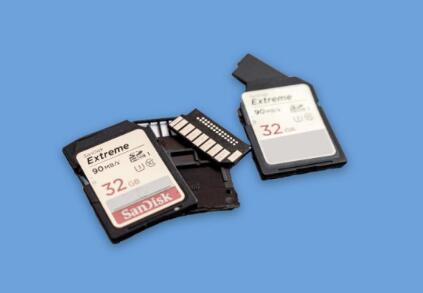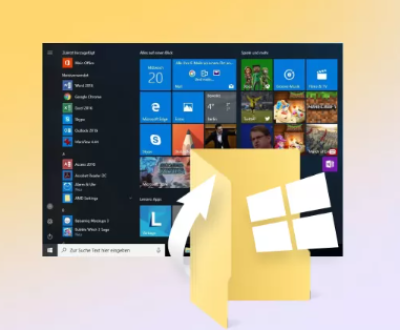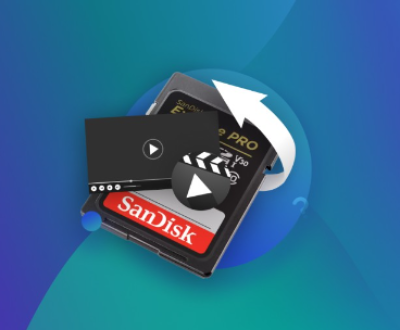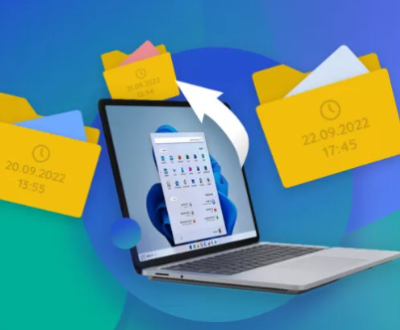Repairing a corrupted micro SD card is a common challenge, as these small storage devices are vulnerable to damage from various factors such as improper ejection, virus infections, or file system errors. Whether you’re dealing with a micro SD card that has become unreadable, has corrupt files, or fails to mount on your device, this guide will explore the potential causes of corruption and provide you with comprehensive steps on how to attempt recovery. The key goal here is to recover your files or fix the SD card without causing further damage.
Micro SD cards are popular storage solutions for smartphones, cameras, drones, and other portable devices. These cards store everything from photos and videos to documents and system files. However, like any storage medium, they are prone to corruption due to factors such as:

Improper Ejection: Removing the micro SD card from a device before it has finished writing or reading data can cause corruption.
Virus or Malware: A virus or malware infection can corrupt the data on your SD card, making it unreadable.
File System Errors: If the file system of the micro SD card becomes damaged, the device might not recognize it or be unable to access the stored data.
Physical Damage: Exposure to water, extreme temperatures, or physical trauma can lead to hardware failure in the SD card.
Software Issues: Sometimes, the operating system or the device’s software may fail to communicate with the SD card, leading to potential errors or corrupt files.
Preliminary Steps Before Repairing
Before diving into technical solutions, it’s essential to take some initial precautions to avoid further damage to your micro SD card and to prevent overwriting valuable data. Here are a few key steps to follow:
Stop Using the Card Immediately: If your micro SD card has become corrupted, it’s essential not to add any new files to it. Overwriting can make data recovery more difficult or impossible.
Check for Physical Damage: Examine the micro SD card for any visible damage. Cracks, bent pins, or dirt on the contact points might prevent the card from working properly. In this case, cleaning or repairing the card physically might help.
Test on Different Devices: Sometimes, the issue may lie with the device you’re using rather than the card itself. Try inserting the micro SD card into another device, such as a different phone, camera, or computer, to see if it works.
Methods to Repair a Corrupted Micro SD Card
1. Use Windows Built-in Tools
If your corrupted micro SD card is readable but showing errors, you can use Windows’ built-in utilities to attempt to fix the corruption.
a. Using CHKDSK (Check Disk) Utility
CHKDSK is a powerful command-line tool in Windows that scans and fixes file system errors. To use it:
Insert the corrupted micro SD card into your computer via a card reader.
Open Command Prompt (press Windows + R, type cmd, and press Enter).
Type chkdsk X: /f, replacing X with the drive letter assigned to your micro SD card (e.g., chkdsk E: /f).
Press Enter and allow CHKDSK to scan and repair the file system errors.
The /f parameter tells CHKDSK to fix any found errors. If it detects corruption, it will attempt to resolve the issues and make the SD card usable again.
b. Using Disk Management
If CHKDSK doesn’t work, you can try using Disk Management:
Right-click the Start Menu and select Disk Management.
Find your micro SD card in the list of drives.
Right-click the card and select Format.
Choose FAT32 (or exFAT if the card is large) as the file system and complete the process.
Note: Formatting will erase all data on the card, so this is only an option if you have a backup or if the data is already lost.
2. Format the Micro SD Card Using a Third-Party Tool
If Windows’ built-in tools fail to repair your corrupted micro SD card, third-party utilities can sometimes fix issues that the default tools cannot handle. Tools like EaseUS Partition Master, MiniTool Partition Wizard, or SD Formatter are designed to repair or reformat corrupted cards effectively.
Steps to use SD Formatter:
Download and install SD Formatter from the SD Association’s website.
Insert the corrupted micro SD card into your computer.
Open SD Formatter and select the correct drive letter for your SD card.
Choose Quick Format or Full Format (Full Format is recommended to ensure the card is completely cleaned).
Click Format and let the tool complete the process.
After formatting, your micro SD card should be ready for use again, but keep in mind that formatting will erase all data on the card.
3. Use Data Recovery Software
Panda Assistant also boasts a high success rate in data recovery. With its state-of-the-art algorithms, it can restore data from damaged or corrupted files, providing a reliable solution even in challenging recovery scenarios. The software is designed to ensure the integrity of your data throughout the recovery process, minimizing the risk of further damage or loss.
Additionally, Panda Assistant supports a wide array of operating systems, including Windows, macOS, and even Android, making it a versatile tool for users across different platforms. The intuitive interface further enhances its ease of use, ensuring that even those with little technical expertise can navigate the software with ease.
4. Try Linux-Based Tools
Linux-based tools can sometimes repair corrupted micro SD cards that Windows cannot handle. TestDisk is a free, open-source tool that can help you recover lost partitions and repair file systems.
Steps to use TestDisk:
Download and install TestDisk (it works on Linux, Windows, and macOS).
Insert the corrupted SD card into your computer.
Open TestDisk from the command line.
Select your micro SD card and follow the on-screen instructions to scan for lost partitions.
If TestDisk finds any partitions, it will allow you to recover them.
TestDisk also offers a Write feature, which can help you recover or repair the file system.
5. Using Linux for Reformatting
If you’re familiar with Linux, you can use the GParted utility to reformat a corrupted micro SD card.
Insert the SD card into a Linux system.
Open the GParted tool.
Select the SD card from the drop-down menu.
If the card is corrupted, you might not see the file system. In that case, choose to Delete any partitions and then create a new partition with a FAT32 or exFAT file system.
Apply the changes and then check if your micro SD card is usable.
6. Fix Physical Damage
If the micro SD card is physically damaged, the repair process becomes much more complicated. Physical damage could involve the card’s controller chip, memory chip, or connectors. Here are a few steps you can try:
Clean the Contacts: Use a soft cloth and rubbing alcohol to clean the metal contacts of the SD card. Dirt and grime on the contact points can sometimes prevent the card from being read.
Freeze the SD Card: Some users claim success with freezing a damaged SD card in a sealed plastic bag for a few hours, then attempting to recover the data quickly after removal. This is a controversial method and should only be used as a last resort.
Consult Professional Services: If the damage is severe, you may need to consult a data recovery professional. These services can be expensive but have specialized equipment to recover data from physically damaged cards.
7. Prevent Future Corruption
Once you’ve repaired your corrupted micro SD card, it’s essential to take steps to prevent future corruption. Here are some tips to keep your data safe:
Always Eject Properly: Ensure that you safely eject the SD card from your device before removing it. Most devices have an option to eject or unmount external storage.
Use Antivirus Software: Regularly scan your devices for malware or viruses that could corrupt your files.
Back Up Your Data: Always back up important files from your micro SD card to another device or cloud storage service.
Avoid Physical Damage: Keep your SD card away from extreme conditions such as moisture, high temperatures, or physical impacts.
Regular Formatting: Occasionally format your SD card, especially if it’s been used for a long time or has been in many devices. This helps maintain optimal performance.
About us and this blog
Panda Assistant is built on the latest data recovery algorithms, ensuring that no file is too damaged, too lost, or too corrupted to be recovered.
Request a free quote
We believe that data recovery shouldn’t be a daunting task. That’s why we’ve designed Panda Assistant to be as easy to use as it is powerful. With a few clicks, you can initiate a scan, preview recoverable files, and restore your data all within a matter of minutes.
Subscribe to our newsletter!
More from our blog
See all postsRecent Posts
- How to restore deleted images 2025-06-30
- How to restore a deleted file on windows 2025-06-30
- is there any way to restore deleted photos 2025-06-30

 Try lt Free
Try lt Free Recovery success rate of up to
Recovery success rate of up to









